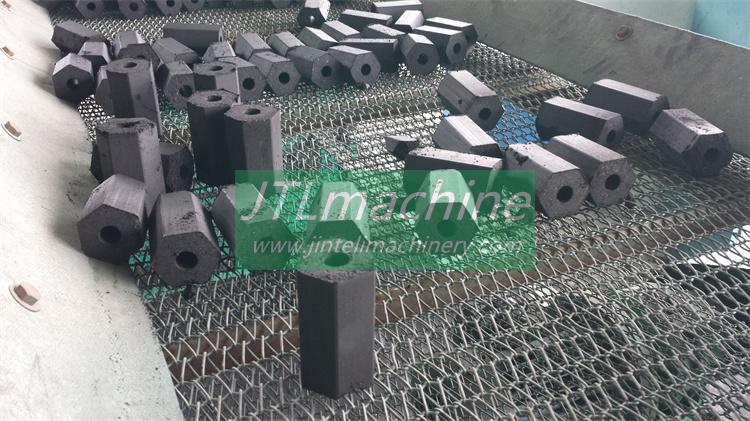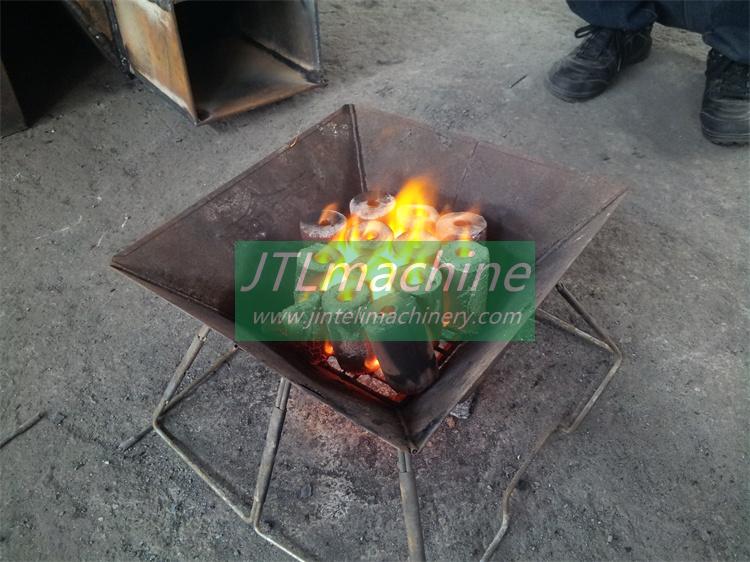Table of Contents
التقنيات المبتكرة في خطوط آلات الفحم الصينية: تطوير الجودة والكفاءة
آلات معالجة الفحم عالية الجودة: تحويل صناعة الفحم في الصين

إحدى المزايا البارزة لآلات معالجة الفحم المعاصرة هي قدرتها على الاستفادة من مجموعة متنوعة من المواد الخام. اعتمد إنتاج الفحم التقليدي بشكل كبير على الخشب، مما ساهم في إزالة الغابات وتدهور البيئة. ومع ذلك، يمكن لأحدث الآلات معالجة مختلف المخلفات الزراعية والحرجية، مثل نشارة الخشب، وقشور الأرز، وقشور جوز الهند، وتحويلها إلى فحم عالي الجودة. لا يؤدي هذا التنوع إلى تخفيف الضغط على الغابات فحسب، بل يشجع أيضًا على إعادة تدوير المنتجات الثانوية الزراعية، بما يتماشى مع أهداف الاستدامة الأوسع.
علاوة على ذلك، فقد سهّل تنفيذ تقنيات معالجة الفحم المتقدمة إجراء تحسينات كبيرة في كفاءة استخدام الطاقة. تم تصميم الآلات الحديثة لتحقيق أقصى قدر من الكفاءة الحرارية وتقليل الانبعاثات، ومعالجة المخاوف البيئية المرتبطة بطرق إنتاج الفحم التقليدية. على سبيل المثال، تستخدم أفران الكربنة المعاصرة أنظمة مبتكرة لاستعادة الحرارة، والتي تلتقط الحرارة المهدرة وتعيد استخدامها، وبالتالي تقليل استهلاك الوقود وخفض تكاليف التشغيل. بالإضافة إلى ذلك، غالبًا ما تتميز هذه الآلات بأنظمة تحكم متطورة تسمح بمراقبة دقيقة وتعديل معلمات العملية، مما يضمن الأداء الأمثل وتقليل التأثير البيئي.
الآثار الاقتصادية لهذه التطورات عميقة. تتيح آلات معالجة الفحم عالية الجودة للمنتجين تحقيق وفورات الحجم وخفض تكاليف الإنتاج وتعزيز الربحية. ومن خلال زيادة الطاقة الإنتاجية وتقليل استهلاك الموارد، تتيح هذه الآلات للشركات تلبية الطلب المتزايد في السوق على الفحم مع الحفاظ على الأسعار التنافسية. وهذا بدوره يحفز نمو الصناعة ويعزز تطوير القطاعات المساعدة، مثل تصنيع المعدات وخدمات الصيانة، مما يساهم في التنمية الاقتصادية الأوسع.
علاوة على ذلك، فإن اعتماد آلات معالجة الفحم المتطورة قد عزز الابتكار والقدرة التنافسية داخل صناعة. والشركات التي تستثمر في هذه التكنولوجيات في وضع أفضل يسمح لها بتطوير عروض منتجات جديدة، مثل الفحم المتميز لتطبيقات محددة، بما في ذلك الشواء والمعادن والعمليات الصناعية. إن القدرة على إنتاج الفحم بجودة متسقة وخصائص مصممة خصيصًا تعزز تمايز السوق وتفتح مصادر إيرادات جديدة.
في الختام، لعب ظهور آلات معالجة الفحم عالية الجودة دورًا محوريًا في تحويل صناعة الفحم في الصين. ومن خلال دمج التقنيات المتقدمة والممارسات المستدامة، عززت هذه الآلات كفاءة الإنتاج، وخفضت التأثير البيئي، ودفعت النمو الاقتصادي. ومع استمرار تطور الصناعة، سيظل اعتماد الآلات المبتكرة عاملاً رئيسياً في تلبية متطلبات السوق الديناميكية وتعزيز التنمية المستدامة. يعد التحسين المستمر لتقنيات معالجة الفحم النباتي بمواصلة الارتقاء بالصناعة، وتعزيز مكانة الصين كشركة رائدة عالميًا في إنتاج الفحم والمساهمة في مستقبل أكثر استدامة وازدهارًا.

In conclusion, the advancements in technology and design implemented by Chinese charcoal machine line companies have significantly improved the quality and efficiency of charcoal production. Through automation, sustainability initiatives, energy efficiency, and user-centric design, these companies have set new benchmarks in the industry. Their dedication to innovation ensures that they remain leaders in the global market, providing high-quality charcoal processing machines that meet the evolving demands of various industries.
High-Quality Charcoal Processing Machines: Transforming China’s Charcoal Industry
High-Quality Charcoal Processing Machines: Transforming China’s Charcoal Industry
In recent years, China’s charcoal industry has witnessed significant transformation, driven by advancements in high-quality charcoal processing machines. These machines, pivotal in the production of superior charcoal products, have not only enhanced efficiency but also contributed to environmental sustainability and economic growth. The evolution of this industry reflects a confluence of technological innovation and a growing awareness of ecological impacts, underscoring the critical role played by specialized machinery in reshaping traditional manufacturing processes.
Moreover, the implementation of advanced charcoal processing technologies has facilitated significant improvements in energy efficiency. Modern machines are designed to maximize thermal efficiency and minimize emissions, addressing the environmental concerns associated with traditional charcoal production methods. For example, contemporary carbonization furnaces utilize innovative heat recovery systems, which capture and reuse waste heat, thereby reducing fuel consumption and lowering operational costs. Additionally, these machines often feature sophisticated control systems that allow for precise monitoring and adjustment of process parameters, ensuring optimal performance and minimizing environmental impact.
The economic implications of these advancements are profound. High-quality charcoal processing machines enable producers to achieve economies of scale, lowering production costs and enhancing profitability. By increasing output capacity and reducing resource consumption, these machines make it possible for companies to meet rising market demand for charcoal while maintaining competitive pricing. This, in turn, stimulates industry growth and fosters the development of ancillary sectors, such as equipment manufacturing and maintenance services, contributing to broader economic development.
Furthermore, the adoption of cutting-edge charcoal processing machinery has fostered innovation and competitiveness within the industry. Companies that invest in these technologies are better positioned to develop new product offerings, such as premium charcoal for specific applications, including barbecue, metallurgy, and industrial processes. The ability to produce charcoal with consistent quality and tailored properties enhances market differentiation and opens up new revenue streams.
In conclusion, the advent of high-quality charcoal processing machines has played a pivotal role in transforming China’s charcoal industry. By integrating advanced technologies and sustainable practices, these machines have enhanced production efficiency, reduced environmental impact, and driven economic growth. As the industry continues to evolve, the adoption of innovative machinery will remain a key factor in meeting the demands of a dynamic market and promoting sustainable development. The ongoing refinement of charcoal processing technologies promises to further elevate the industry, reinforcing China’s position as a global leader in charcoal production and contributing to a more sustainable and prosperous future.






